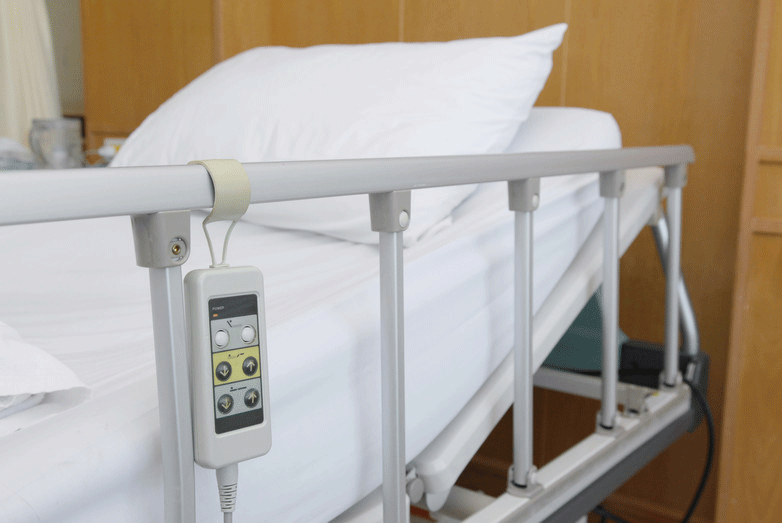Getting out of bed is challenging for many elderly people. Certain transfer devices help the elderly safely and comfortably get in and out of bed. Some options are as simple as adding two handrails to the side of the bed, and just like that seniors enjoy greater independence, mobility and confidence.
1. Assist Bed Rails
Bed assist rails, also referred to as bed rails, safety rails and handles are an easy way to give seniors more mobility. Attached to each side of the bed, assist rails are frequently seen in hospitals, nursing homes and senior homes. Adding a set of assist bed rails helps elderly patients sit up and stand up because they can grab onto the side rails for support. For some patients, these handrails also help change positions in bed.
Seniors that are weak, unstable on their feet or injured enjoy increased mobility and independence from bed rails. Similar safety rails are also added to bathtubs, toilets, and other areas of the home where one has to sit down and get back up.
Average bed rails range in price from around $45 to $100.
There are many different types of assist rails, some attach to the floor and others attach directly to the side of the bed. Most models are adjustable based upon patient height and weight, as well as mattress size. There are permanent bed rails as well as more portable options that are easy to pack up and take on the go. Some even come with handy pockets built into the side, perfect for storing glasses, medication or other important things.
2. Pivot Discs
Pivot discs are best for patients that have limited or no range of pivot motion. Patients will still need some upper body strength in order to properly use a pivot disc.
These handy tools enable some patients to do independent transfers between the bed, toilet, chair, and so forth. Other patients may still require assistance, although the pivot disc remains helpful. These devices make transferring a lot easier, and also reduce strain on the caregiver’s back.
The pivoting disc can be placed anywhere, then picked up and carted off to be used elsewhere. It is placed on the ground in between the patient and the wheelchair. Patients step on the disk while holding onto two sets of handrails. From there, they stand and use their upper body to push so that the disc twists them around.
3. Lifting Poles
Lifting poles are large poles that stretch from floor to ceiling, and can be fit to almost any room. Poles can be installed next to the bed to help patients sit up and stand. Standard poles can support as much as 400-pounds. Most poles come with a handgrip and strap to help assist with movement. These same poles can also be installed in bathrooms, kitchens and virtually anywhere.
Lifting poles are either attached to a wall or free standing. It’s important to make sure free standing poles are solid and strong so that they do not tip over when in use.
Lifting poles are not the best option for seniors that have weak arms or core muscles. Some range of mobility is important to utilize this aid.
4. Leg Lifters
If a senior struggles to lift their legs in and out of bed, leg lifters make a solid assistant. This type of transfer aid works by helping seniors lift their legs when they want to get out of bed. Many patients with decreased leg strength or who have recently undergone hip or knee injury find this mobility aid incredibly helpful.
There are manual and power leg lifters. Manual leg lifts rely on a reinforced strap with a loop at the end. Patients put their foot inside of the loop and then pull up with their arms, causing the leg to lift. In order to safely operate a manual leg lift, patients need to have a certain level of strength.
Patients that lack the strength to lift their leg up using their arms will benefit from powered leg lifters. Leg lifts are attached to the side of the bed and controlled with a remote. This allows patients the freedom to get up with the push of a button.

